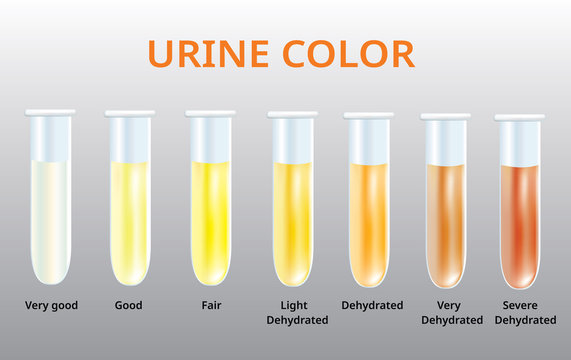Urine color might disclose a great deal about one’s health. This is a description of every color of pee.
Numerous conditions, including kidney disease, diabetes, and urinary tract infections, can be identified with a urine test. Additionally, it might indicate if you have a sexually transmitted infection (STI) or whether you are pregnant. Urine color can also reveal information about your physical condition, though not as accurately.
Your urine’s clarity—how clear, hazy, or yellow it is—will indicate if you’re safe to proceed or whether there may be some underlying problems. A more significant issue may be indicated by abnormalities in the urine, such as the presence of blood, protein, or certain compounds. Dr. Prakash Sankapal, a consultant urologist at Fortis Hiranandani Hospital in Vashi, provided the OnlyMyHealth team with a comprehensive pee analysis chart so they could learn the meanings behind the various colors of urine.
Clear Or Pale Yellow
According to Dr. Sankapal, normal urine color ranges from clear to pale yellow, which shows that your body is properly hydrated.
But, he continued, consuming an excessive amount of water might affect the body’s electrolyte levels, which can result in clear urine.
Therefore, having clear pee may be a sign that you need to drink less water.
Furthermore, the National Library of Medicine states that dark brown but clear urine may be a sign of acute viral hepatitis or cirrhosis, two liver disorders.
Dr. Sankapal suggested, “Stop drinking water until you’re thirsty again and your urine returns to a normal, light yellow color.”
Deep Yellow
If the color of your pee is a dark yellow, you are dehydrated and need to drink more fluids.
According to Dr. Sankapal, “Dark yellow urine is common in the morning after sleep, as it has been 7-8 hours since your last water intake.” He did, however, warn that your body needs to stay hydrated if it occurs during the day as well.
Three liters a day, or at least ten to twelve glasses, is the recommended intake.
Color Red
Urine that is crimson in color might have various causes, however it may look concerning. These consist of:
eating foods with natural magenta or deep pink colors, such as beets, blueberries, or rhubarb
diseases including kidney, ureter, or bladder stones, urinary tract infections (UTI), or tumors in the kidney or bladder
Using some drugs that contain phenazopyridine (Pyridium) and laxatives.
Orange Color
Urine that is orange in color indicates mild dehydration, and more fluid intake may be required.
Concerns with the liver or bile duct may be the medical cause, according to Dr. Sankapal, who also mentioned that yellow eyes and skin, as well as orange urine with pale feces, may indicate a liver problem.
Furthermore, the color of the urine may turn orange due to the use of laxatives, anti-inflammatory medications, or chemotherapy.
Color Brown
Urine that has turned brown is a sign of severe dehydration. This could also be a sign of a number of illnesses that require quick medical attention, such as blood in the urine, kidney, liver, or sinus infections.
Green/Blue Color
Blue urine is an uncommon occurrence that is primarily brought on by dietary modifications.
A urinary tract infection or a rare genetic disease could potentially be indicated by green urine. Medication containing phenol or antidepressants may potentially be to blame.
Milky/Cloudy Urine
Urine can become hazy for a variety of reasons, including dehydration, UTIs, and STIs. Kidney stones, diabetes, problems with the prostate, and vaginitis are some medical diseases that can cause cloudy urine.
In conclusion
Urine should ideally be the color of pale yellow. Clear urine is not dangerous, but it may be a sign that you need to drink less water since you are overhydrated. Though they can also be caused by specific medications and underlying medical issues, more obvious colors like brown, dark yellow, red, green, and blue might indicate dehydration. A cloudy urine can be an indication of a STI or UTI, thus it’s important to not ignore it. If you notice abrupt changes in the color of your urine, consult your physician.




